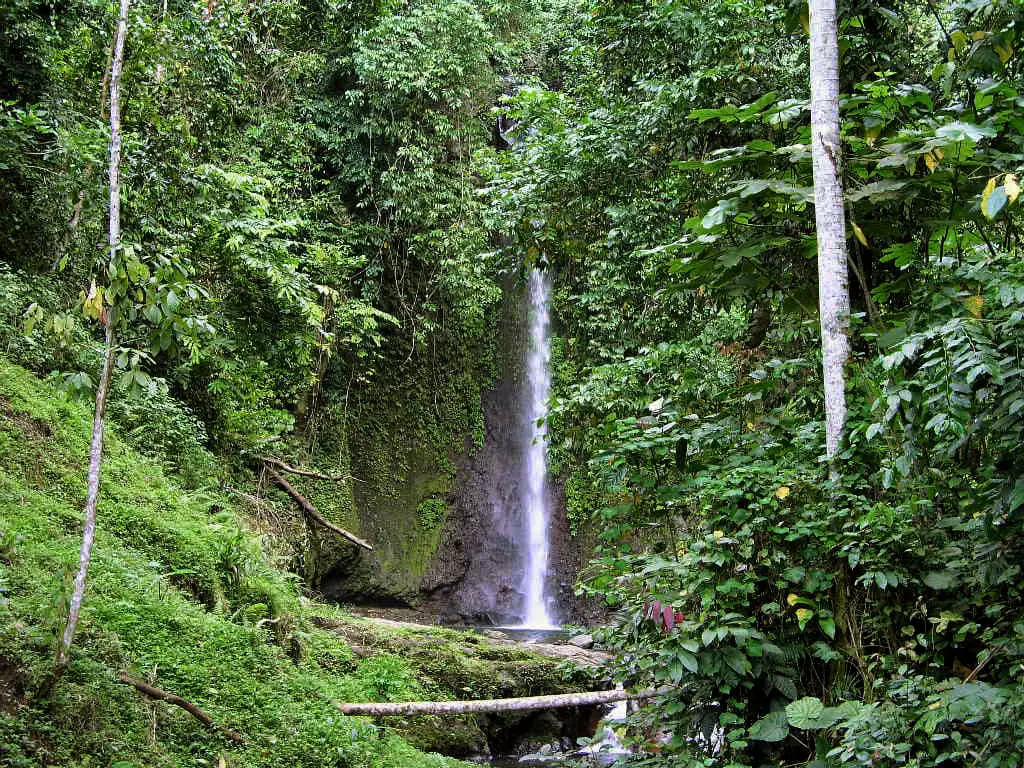Wondermondo 🢖 World 🢖 Wonders of Africa 🢖 Wonders of São Tomé and Príncipe
Territory
Wonders of São Tomé and Príncipe
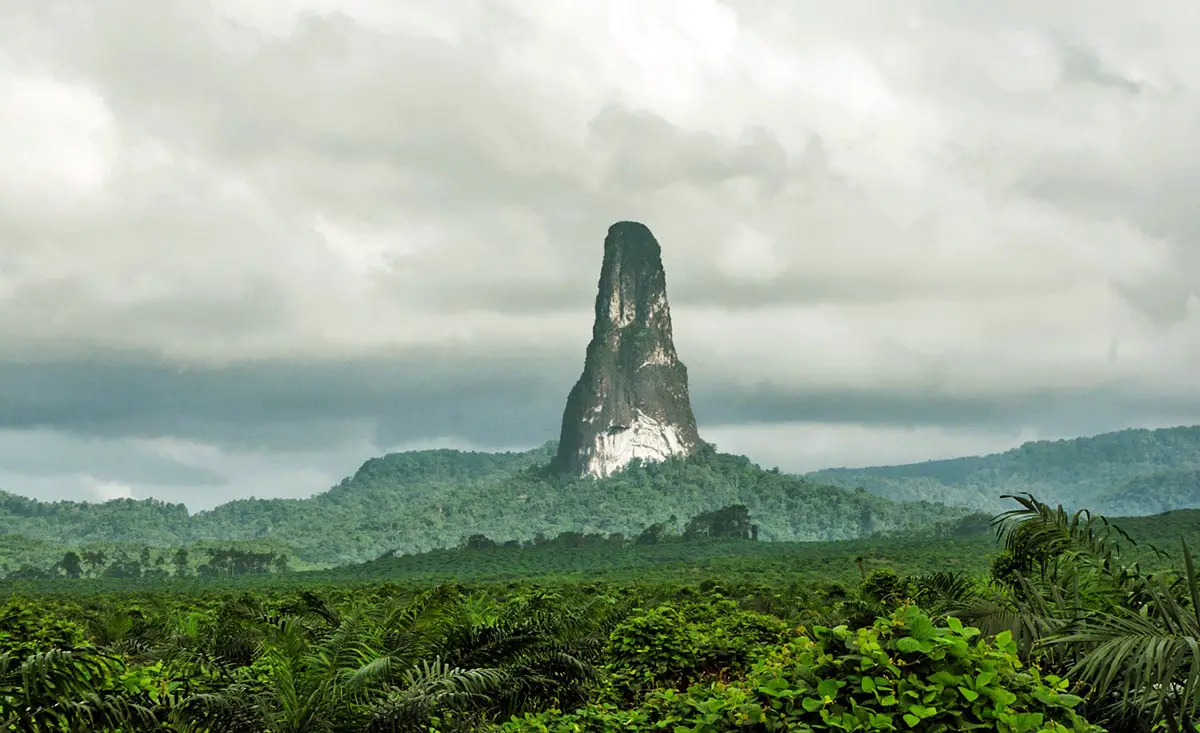
 Highlights
Highlights
Although São Tomé and Príncipe is a very small country, it has amazing scenery and some exciting landmarks.
Visually most impressive is the fantastic Pico Cão Grande, but even more amazing is the unique montane rainforest in both main islands. Here live hundreds of species that are not met anymore else in the world.
This small African country has also some outstanding architectural landmarks, to some extent it even resembles a reserve of historical Portuguese colonial architecture.
Map with the described wonders
If you see this after your page is loaded completely, leafletJS files are missing.
 Top 13 wonders of São Tomé and Príncipe
Top 13 wonders of São Tomé and Príncipe
Geological wonders
Pico Cão Grande
São Tomé
Dramatic needle-shaped volcanic plug that rises more than 300 m above its surroundings.
Pico Cão Pequeno
São Tomé
Smaller – but, nevertheless, an impressive volcanic plug not too far from the enormous Cão Grande.
São Nicolau Falls
São Tomé
Picturesque waterfall that slides down along the cliff in the rainforest.
Boca de Inferno
São Tomé
An impressive sea spout. Waves here are directed into narrow channels, surrounding an interesting basalt formation.
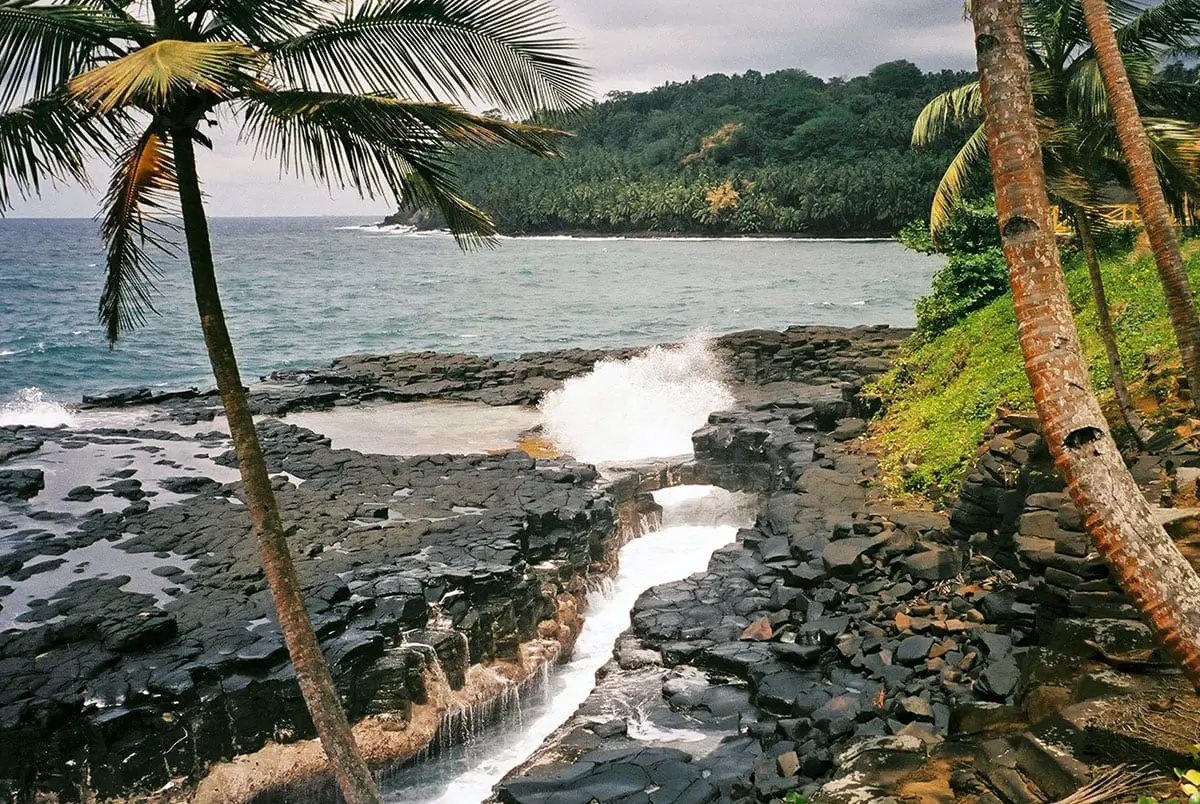
Biological wonders
Lagoa Amélia
São Tomé
Mist forest with unusual, endemic species of plants. Here grow endemic begonias – more than 3 m tall Begonia crateris and Begonia baccata, the endemic gymnosperm Afrocarpus mannii and the more usual Spiny Tree Ferns Alsophila manniana (and some 150 species of other tree ferns), endemic orchids and other rare and interesting plants. Here lives a unique snail Thyrophorella thomensis – the only snail that can close a “door” of his shell. Locals often consider that this dense rainforest is a mysterious and ghostly place.
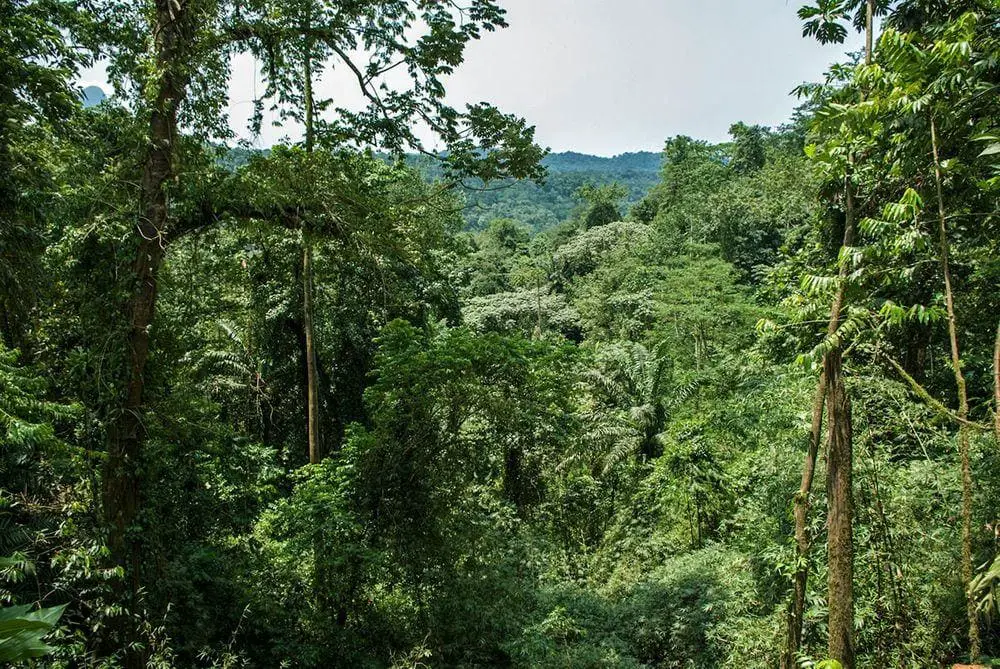
Pico de Príncipe
Príncipe
The highest summit in Príncipe island, 948 m (?) above sea level. This montane rainforest is very rich with endemic species, including several species of birds, reptiles, amphibians, and subspecies of shrew Crocidura poensis. Further research might bring new discoveries.
Architecture wonders
Agostinho Neto plantation
São Tomé
The administrative center of once rich Portuguese plantation. The plantation was founded in 1865 and here in colonial style was built the whole town. The main palace is an enormous structure with three floors. There are several historical plantations on the island, including Água Izé, Monte Café, and others.
São Jerónimo Fortress
São Tomé
Ruins of a fortress that was built in 1566.
Sao Tomé Cathedral
São Tomé
Large and old cathedral. It is possible that its construction started in the late 15th century. The current structure was built (or renovated) in 1576 – 1578, and restored in 1814. Its facade was altered in 1956.
Santo António
Príncipe
The historical capital of São Tomé and Príncipe in the time period from 1753 to 1852. The city is rich with colonial architecture that is overgrowing with jungle.
San Sebastian Fort (São Sebastião Fort)
São Tomé
The earliest European building in Sao Tomé, construction was started in 1575, later the fort was enlarged. Lighthouse located here since 1866. Currently one of the best-preserved historical forts in this part of the world. Contains museum.
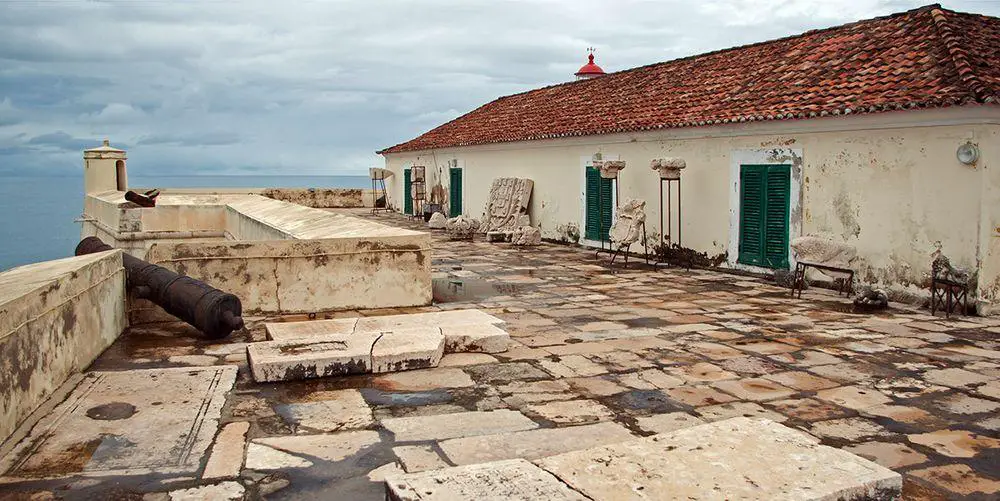
Santo António da Ponta da Mina Fortress
Príncipe
Ruins of the fort, most likely built in 1695 and reinforced in later times.
 Recommended books
Recommended books
São Tomé e Príncipe
This book is a personal “point-in-time” description of the unique West African country of São Tomé e Príncipe as it presented itself to the author in 2015. It is not intended as a traditional travel guide although it does contain an introduction with practical information. Rather, it takes the reader on tours around the country’s two main islands introducing both the magnificent scenery and the wonderful people.
Sao Tome & Principe (Bradt Travel Guides)
Marooned off the coast of Gabon, the volcanic islands of São Tomé & Príncipe are a largely undiscovered, uniquely rewarding, and safe destination with an exciting blend of African, Portuguese, and Caribbean cultures. Explore secluded beaches and colonial plantation houses; spot endemic rainforest birds and learn about medicinal plants; scale the Pico and dive in toasty waters; taste the world’s best chocolate; watch turtles hatching and get into the laid-back, ‘léve-léve’ Santomean groove. This remains the only dedicated guide to this island paradise.

